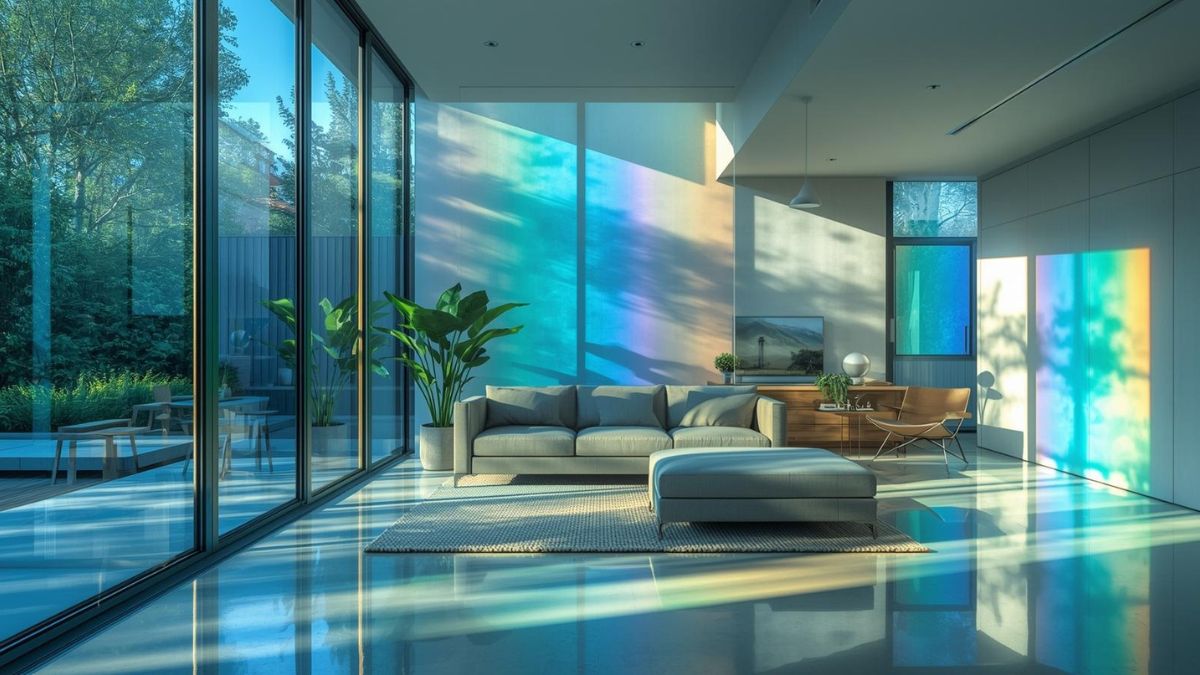Last Updated on September 30, 2025 by Kravelv Spiegel
Adding a dichroic film to your home may initially seem simple until you run into options. Sure, you might have seen shimmering windows in a design magazine, and thought, that looks stunning, I want that in my place. But then reality sets in. You start wondering: will this look good in my home, or will it stick out like a sore thumb?
The challenge can be real if your home already has a “vibe.” Maybe it’s cozy and rustic, maybe modern and sleek, or maybe you’re still figuring it out. Either way, not every option out there is going to blend well with your existing setup. So, how do you choose dichroic films that fit your home’s style? Keep reading.
Think About the Mood You Want to Create
Before you even scroll through catalogs or step into a showroom, pause for a moment. Ask yourself: what kind of feeling do I want in this space? Do you want it to feel airy, bright, and playful—or calm, grounded, and sophisticated? Dichroic films change color depending on the light and the angle, so the vibe shifts throughout the day. That’s both exciting and tricky.
For example, if you’ve got a minimalist home, lots of white walls, clean lines, simple furniture—you might not want to overwhelm the space with bold rainbow reflections everywhere. A softer, more subtle film could complement that clean aesthetic without stealing the show. On the flip side, if your home thrives on personality, texture, and color, then leaning into the more vibrant, dramatic options might feel perfect.
Pay Attention to Your Existing Colors and Materials
Dichroic films aren’t shy. They will interact with every color, texture, and material in the room. That means your furniture, curtains, rugs, and even the paint on your walls will either play nicely with them or completely clash. You’ve probably seen spaces where one design choice just throws everything off. You don’t want that happening in your home.
Take a look around your space. If you have a lot of wood, say oak cabinets or walnut tables—certain films with warm undertones might complement those beautifully. Meanwhile, if your home has cooler tones—think gray tiles, stainless steel, or glass-heavy furniture—you might want a film with cooler hues that lean toward blues, greens, or silvers.
Here’s a tip: grab a few samples if you can. Tape them up on your windows and live with them for a few days. Watch how they change as the sun moves. Make a decision based on your observation.
Match It to Your Home’s Overall Style
This might sound obvious, but you’d be surprised how many people skip this step. Not every design trend belongs in every type of home. If your home leans toward rustic or traditional, you can still use dichroic film. You just need to choose wisely. Look for softer shifts in tone, maybe films that lean toward warm ambers, subtle greens, or shades that mimic natural elements. It should feel like it belongs, not like it’s competing for attention.
On the other hand, if you’ve got a more modern or eclectic space, go bold. This is where films that throw vibrant pinks, purples, or strong blues can really shine. They’ll enhance that contemporary feel and make the space look more intentional.
Summing Up
You don’t need to follow a strict rulebook when choosing a dichroic film. Just pay attention to your home, style, and how you want to feel in your space. The biggest mistake you can make is treating it like a one-size-fits-all solution. It’s not. What looks magical in one home might feel chaotic in another.

